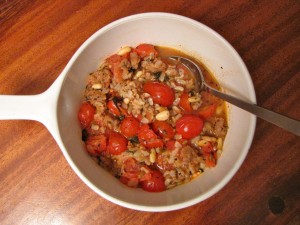The Mediterranean diet has been shown to bestow countless health benefits to those who consume it, including cardiovascular benefits, mental health benefits, and metabolic health benefits. Metabolic

syndrome is of particular interest to researchers, as there have been significant increases in the various components of the condition (high blood pressure, high sugar levels, excess body weight, and abnormal cholesterol levels) in the recent years which is very likely to be related to dietary changes across all cultures.
A new study in press in the journal Metabolism aimed to examine the relationship between adherence to the Mediterranean diet and metabolic syndrome in Polish adults.
8821 Polish adults (aged 45-69 years) participated in this study. Dietary information was collected via self-reported questionnaire and adherence to the Mediterranean diet was scored using the MedTypeDiet Score system.
Height, weight, waist circumference, and blood pressure measurements were taken for each participant during a physical examination.
Other socio-demographic and lifestyle information was also collected.
Important Findings:
- Adherence to the Mediterranean diet was the same between men and women.
- MetTypeDiet scores were significantly (and negatively) associated with waist circumference, systolic blood pressure, and triglyceride levels.
- Those with the highest adherence to the Mediterranean diet were least likely to have metabolic syndrome, obesity, high triglyceride levels, and hypertension.
- Moderate wine consumption, low dairy intake, and a high unsaturated/saturated fatty acid ratio were negatively associated with metabolic syndrome.
The results of this study add to the mounting evidence that the Mediterranean diet is beneficial for lowering the risk of metabolic

disease. Specifically, this study found that those with the high adherence to the Mediterranean diet were less likely to have metabolic syndrome, obesity, high triglyceride levels, and hypertension. Looking at individual dietary components, moderate wine consumption, low dairy intake and a higher ratio of unsaturated to saturated fatty acids resulted in a significantly lower risk of developing metabolic syndrome in Polish adults.
Source:







